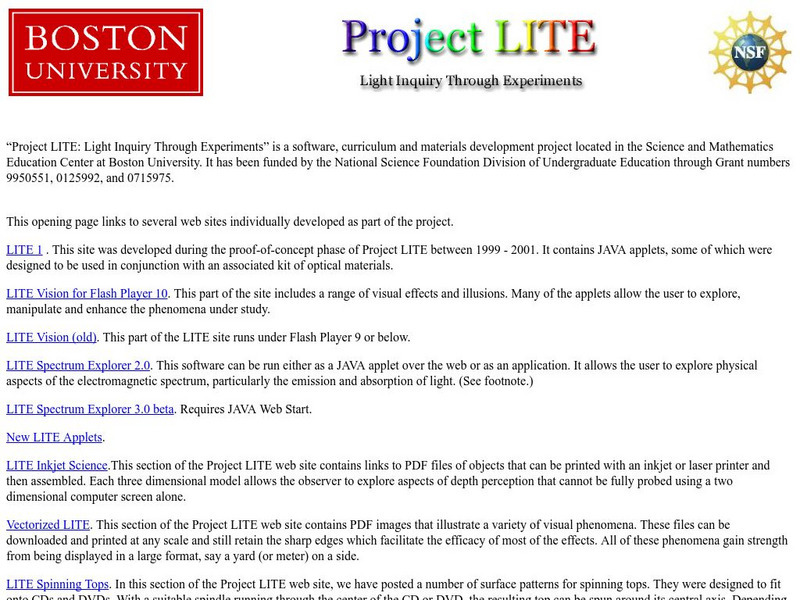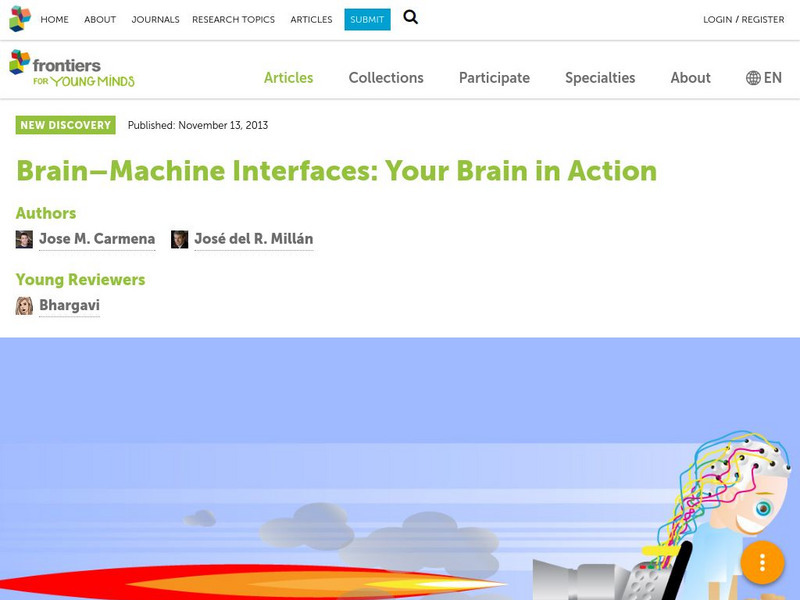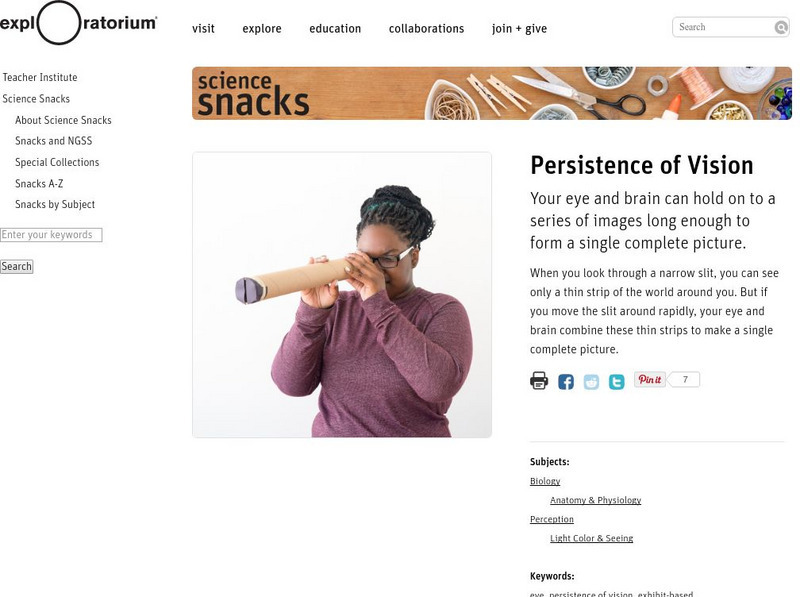PBS
Pbs Teachers: Scientific American: Life's Little Questions: Tickling in the Lab
Investigate whether it is possible to tickle yourself, and explain how spoken and tactile directions may interfere with the tickle sensation.
TED Talks
Ted: Ted Ed: Different Ways of Knowing
Daniel Tammet has linguistic, numerical and visual synesthesia- meaning that his perception of words, numbers and colors are woven together into a new way of perceiving and understanding the world. The author of "Born on a Blue Day,"...
Exploratorium
Exploratorium: Science Snacks: Thread the Needle
Learn about depth perception in this needle-threading activity.
Exploratorium
Exploratorium: Science Snacks: Size and Distance
An experiment in depth perception where you investigate how you perceive the size and distance of objects with one eye closed.
Exploratorium
Exploratorium: Science Snacks: Mirrorly a Window
Understand that what you see is often affected by your expectations of what you think you should see. This activity will explore the sensation you feel when your brain expects to see something.
Other
Monell Chemical Senses Center: Areas of Research: Sensation and Perception
Overview of how chemical signals from animals mark territories, identify individuals, signify social rank, and indicate reproductive and health status.
Science Buddies
Science Buddies: Now You See It, Now You Don't: A Chromatic Adaptation Project
This project shows that our perceptions can change, even with the stimulus remains the same. A clear color difference in an image disappears after just 20 seconds of looking at another (special) image.
Science Buddies
Science Buddies: Are Your Eyes Playing Tricks on You?
Yogi Berra said "You can observe a lot by just watching." In this human biology science fair project, you will observe how your eyes perceive color by watching afterimages. Afterimages are what you see after staring at an object for...
Boston University
Boston University: Project Lite: Motion
A large collection of online activities for exploring how our eyes perceive real and apparent motion.
Science Buddies
Science Buddies: The Brains Behind 'Where's Waldo?'
What makes you notice someone in a crowd? Why do some things stand out, while others melt into the background? In this experiment you can investigate the psychology of how things get noticed, by studying how our brains perform a visual...
Georgia Department of Education
Ga Virtual Learning: Psychology: Biological Foundations
Virtual learning course on human biology and brain function and how it affects our behaviors. Extensive collection of engaging materials, assignments, and activities for review.
Frontiers Media
Frontiers: Brain Machine Interfaces: Your Brain in Action
Brain-machine interfaces (BMI), or brain-computer interfaces (BCI), is an exciting multidisciplinary field that has grown tremendously during the last decade. In a nutshell, BMI is about transforming thought into action and sensation...
TED Talks
Ted: Ted Ed: What Color Is Tuesday? Exploring Synesthesia
How does one experience synesthesia- the neurological trait that combines two or more senses? Synesthetes may taste the number 9 or attach a color to each day of the week. Richard E. Cytowic explains the fascinating world of entangled...
Exploratorium
Exploratorium: Science Snacks: Whirling Watcher
Make a stroboscope and investigate how to make it seem like the image you look at appears to move.
TED Talks
Ted: Ted Ed: Ideasthesia: How Do Ideas Feel?
The traditional model of our mental function is that first our senses provide data to our brain, which then translates those senses into the appropriate mental phenomena: light into visual images, air vibrations into auditory...
Exploratorium
Exploratorium: Science Snacks: Persistence of Vision
This experiment demonstrates how the eye retains its memory of what it sees for a brief time, allowing us to construct the overall image in our minds from the parts we see.
TED Talks
Ted: Ted Ed: Mary's Room: A Philosophical Thought Experiment
Imagine a neuroscientist who has only ever seen black and white things, but she is an expert in color vision and knows everything about its physics and biology. If, one day, she sees color, does she learn anything new? Is there anything...
TED Talks
Ted: Ted Ed: Would You Opt for a Life With No Pain?
Imagine if you could plug your brain into a machine that would bring you ultimate pleasure for the rest of your life. The only catch? You have to permanently leave reality behind. Hayley Levitt and Bethany Rickwald explore Robert...
TED Talks
Ted: Ted Ed: The Pattern Behind Self Deception
Michael Shermer says the human tendency to believe strange things- from alien abductions to dowsing rods- boils down to two of the brain's most basic, hard-wired survival skills. He explains what they are and how they get us into...
Exploratorium
Exploratorium: Science Snacks: Proprioception
The human body has proprioceptors that send signals to the brain so that we are aware of our body's position and movements. Try these simple experiments to learn about proprioception and about other visual and tactile clues that assist...
Exploratorium
Exploratorium: Science Snacks: Squirming Palm
Create this optical illusion that incorporates what is known as the waterfall effect.
Khan Academy
Khan Academy: Congenital Analgesia
Read the passage "Congenital Analgesia" and complete the related five-question quiz.
PBS
Pbs Teachers: Scientific American: It's a Kid's World: The Magic Years?
Explore children's perceptions by practicing and performing magic tricks for them and then asking them to explain what they think they saw.























